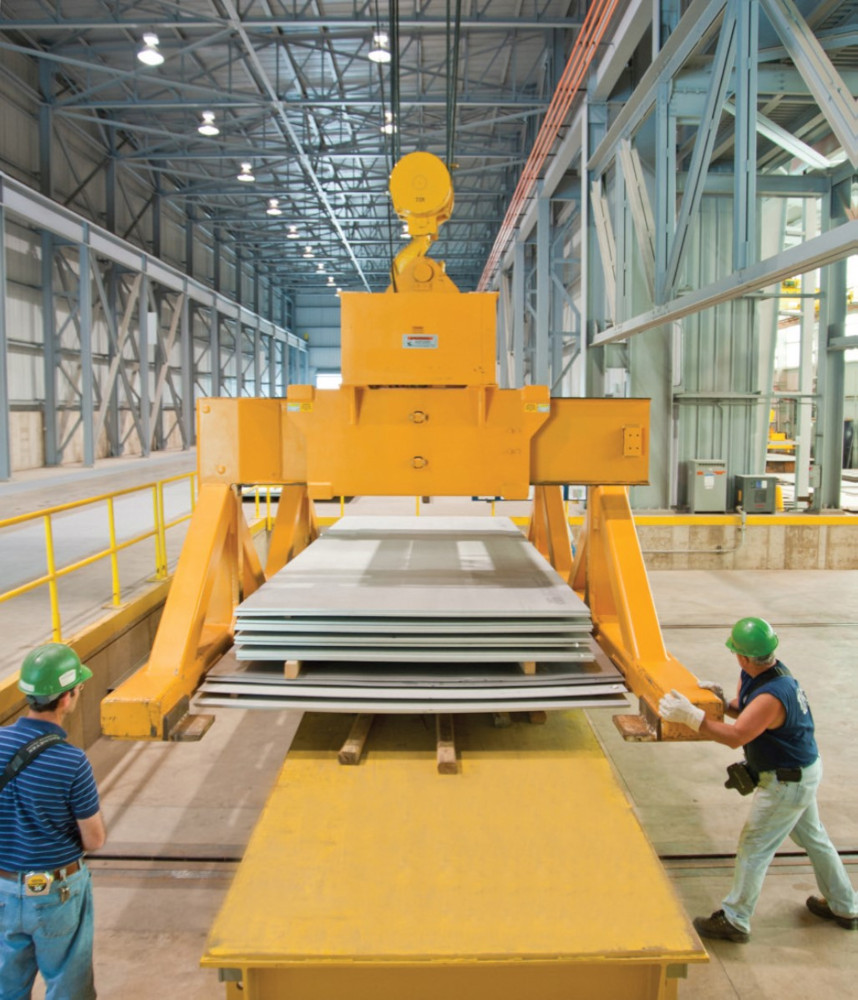Below the hook: Sheet Lifters
5 December 2023There are special below-the-hook products for lifting sheet, and the most common electrical version is not the only option, says Jay Strong, applications specialist, at The Caldwell Group.
Loads come in all shapes and sizes; those dimensions and weights are an important consideration when choosing below-the-hook equipment for safe and efficient material handling.
There is often a requirement to lift and move ‘sheet’, or material that is a thinner gauge than ‘plate’, which starts at approximately a quarter-of-an-inch (a little more than 6mm) thickness.
Sheet is ubiquitous in a multitude of industries, such as metals, wood, plastics, and paper. Standard sizes range from 60in by 96in to 96in by 120in, but lifters can be customised for nearly any application in terms of width and length of sheet, within reason. A product from a standard range of sheet lifters might be fit for purpose, or a modification will be needed, and there are also occasions where a completely bespoke solution is necessary to meet enduse requirements.
As established, perhaps the most obvious starting point when selecting a sheet lifter are the dimensions and weight of the load (sheet). Chances are, the overhead lifting technology will already be in place, or on order, and it is a case of completing the system below-the-hook. A single sheet lifter might be enough, or an entire fleet of them, and often various types are required along a production or manufacturing line.
A typical standard range of sheet lifters might cover capacities from 3.0 tons to 20 tons. Such sheet lifters can be designed to fit nearly all electric overhead travelling (EOT) and other crane hooks, with the hook inserted into an oblong-shaped opening on the lifter, called a bail.
The majority – even as much as 95% – of sheet lifters are electrical, with the power fed from the crane above, because they offer ease of use and faster operation without causing operator fatigue. However, there are multiple types, each of which presents advantages at the point of use:
- Electrical: operated via push-button pendant or radio remote control, making it easy to utilise open and close functions from a distance. They are more commonly associated with heavy use and are typically more expensive.
- Battery: suited to applications where power is not available.
- Hydraulic: often reserved for heavy-duty applications owing to their more robust design and operational features.
- Manual: Hand wheel versions are opened and closed by turning the wheel in either direction. Chain wheel models are also available, operated at a safer distance.
Duty cycle is an important consideration for the buyer – in other words, how often a crane and its below-the-hook equipment will need to work and how close to rated capacity. Think of a 1.0-ton system lifting half a ton once a week (low duty), versus a 20-ton system lifting 18 tons constantly, 24-hours-a day (high duty). There are also many instances where sheet lifters are required to perform faultlessly in extreme conditions, even in high temperatures.
Most sheet lifters are able to handle both small and large bundles of sheet, which is a prerequisite for many buyers. Think about the time (and money) saved, by being able to transport multiple sheets at once, while retaining the flexibility to handle just a single piece when required. Before doing their calculations and measuring likely throughput, it is important that a user checks with the manufacturer or the supply chain partner that the lifter can perform to those specifications.
